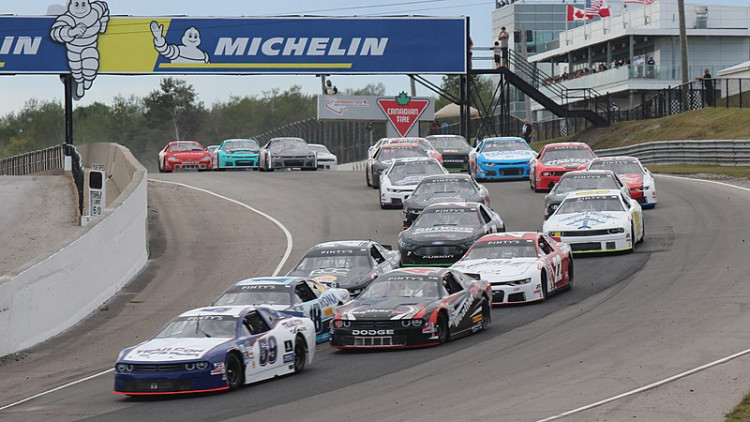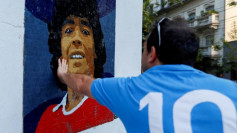Before the 2023 season, NASCAR made precautions to safeguard drivers if the unexpected occurred on the track. Previously, NASCAR stated that fireproof pants, stockings, and balaclavas were worn under helmets as suggestions, not mandatory. However, in the upcoming season, they will also be required to be fireproof.
Racing drivers must wear fire-resistant undergarments, a head sock/helmet skirt, and socks within the organization's safety regulations. Bozi Tatarevic, a NASCAR pit crew member, emphasized that the required gear must be SFI or FIA-rated, allowing fans to enjoy Nascar alongside playing online casino games safer.
There needs to be more information regarding how NASCAR will inspect the needed fire-resistant clothing before races.
NASCAR now mandates fire-resistant underwear, as have other racing organizations in the past. Before each race last year, Formula One inspected the drivers' jewelry and undergarments to ensure compliance with the International Sporting Code.
Prioritize Driver's Safety
All permitted equipment must now be graded by the SFI or the FIA, the two primary safety committees in stock car racing.
Both parties evaluate the Thermal Protective Performance of fabric for certification purposes (TPP). For a suit to receive a TPP rating, the fabric, including the zippers, must be subjected to direct flame.
The TPP results are converted into the number of seconds the fabric can prevent second-degree burns. The greater the TPP score and certification grade, the greater the material's durability.
Fans and F1 and NASCAR management do not want another driver to experience what Romain Grosjean endured when his crashed car at the 2020 Bahrain Grand Prix ignited a raging flame. Niels Wittich, F1 Race Director, cites the tragic tragedy as an illustration of why these policies must be enacted and adhered to. Wittich drafted a letter in which he strongly cautioned drivers against wearing flammable clothing.
"The guideline above ensures that FIA-approved flame-resistant clothing, such as overalls and the inner layer that touches the skin, functions properly and provides adequate protection when exposed to flames.
Suppose non-flameproof materials, particularly synthetic ones, come into touch with the driver's skin. In that case, this could limit the heat protection and increase the driver's likelihood of being burned in a fire.
In the worst-case scenario, these materials may melt, making it difficult to treat a burn victim."
The terms fire resistant and fire retardant are very dissimilar. When an item is fire retardant, it has been treated with chemicals that make it difficult to catch fire or extinguish itself when exposed to an open flame.
Some manufacturers of liners, aprons, and jackets utilize treated cotton twill because it does not melt or drip and can extinguish fires on its own. The most critical safety worry is the melting and pouring of fabric, as the molten material can cause severe skin harm.
In contrast, fire-resistant fabrics are constructed from naturally nonflammable elements. This indicates that their chemical structures are naturally fire-resistant. These materials are designed to prevent the spread of fires and will not melt or leak when placed close to a flame.
Most flame-resistant fabrics are not wholly composed of flame-resistant materials; thus, they will burn, albeit slowly, and frequently extinguish themselves.
Other Safety Measures
Due to the potential of "snagging," jewelry could make it more difficult for a driver to remove protective gear in an emergency, such as a helmet, balaclava, or overalls. Hence no jewelry is allowed during race days.
If medical imaging is required to determine what occurred during an incident, wearing jewelry on the body could cause difficulty and delay. In the worst-case scenario, the presence of jewelry during imaging could cause additional injury. If jewelry is in or near the airway and falls out after an accident, it could be hazardous if swallowed or inhaled.
Similar to other components of the racecar, the seat has evolved to increase safety. Carbon fiber, not metal, absorbs impact shock, and seats are now designed to wrap around the driver's rib cage to provide extra support in an accident. Additionally, some of the most contemporary chairs wrap around the driver's shoulders.
To protect its drivers, NASCAR is more than merely implementing stronger equipment regulations. NASCAR is contributing to the early safety modifications of Next Gen cars. This is a significant milestone for 2023.
In October, NASCAR said that it had provided teams with technical revisions for Next Gen vehicles because it believed the modifications would increase the size of the crumple zone behind the driver. NASCAR believes this will make rear-end collisions safer for drivers





